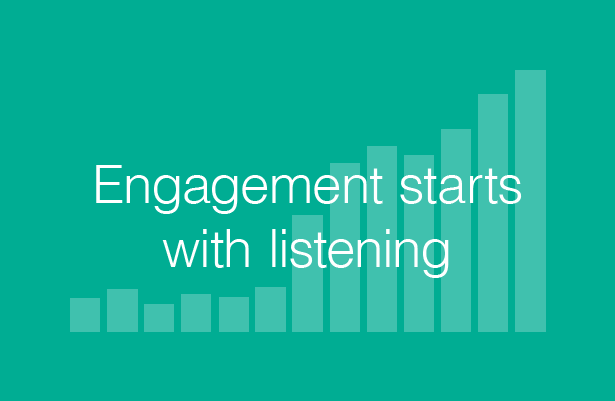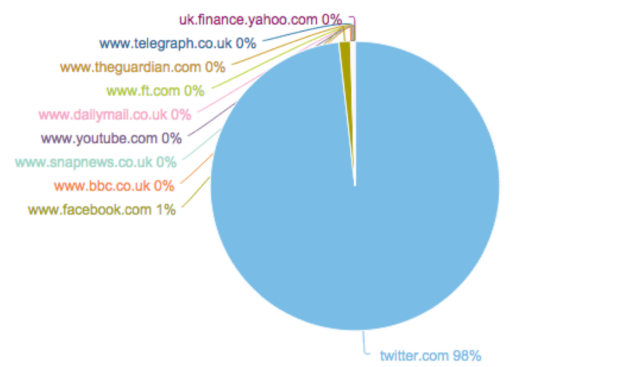Nowadays it seems like everybody has something to say on the internet.
This isn’t meant as a negative statement. It’s great that the internet has enabled a level playing field for people regardless of who they are or where they come from. It does mean, though, that there are a lot of opinions and thoughts to take into account.
As you’ll probably know if you’re familiar with GDS, our users are really important to us. So how do we make sense of what they are saying online?
We start with the obvious step of listening. We use a tool called Brandwatch to help us do this. It enables us to pick up what people are saying about content, services, and campaigns. It should be stressed that there are many different tools that can do this.
What we use it for
Everything starts with a problem or question. This could be something straightforward like how a particular campaign is doing. It can be more complex like monitoring uptake, or what users are saying about a new service.
Listening can help to provide some data to answer the question - nothing more and nothing less. To be effective, all the data captured then needs analysing alongside everything else we know.
One of the most useful things listening can do is provide us with an early warning system when things aren’t working as they should. This can be critical in helping with reputation and crisis management.
We’ve run several projects now: ranging from analysing the recent Budget, through to looking at the campaign to encourage the public to register to vote.
We’ve learned lots of things from these projects, and we’ll be blogging about them in more detail soon. For now, here’s a quick overview.
Twitter is where real-time conversations happen
This is best illustrated by...well, every piece of work we’ve used Brandwatch for so far.
For example, despite the Budget receiving widespread coverage in both national and local newspapers, Twitter actually accounted for 98% of all mentions we found (in total we found just under 195,000 mentions over a two day period). Cue pie chart...
This doesn’t mean that newspaper mentions aren’t powerful. A lot more people will read a single newspaper mention than may read the vast majority of tweets. However, with tweets you are getting a snapshot of how that individual thinks and feels.
You may be wondering about Facebook - after all it’s the most used social network in the UK. Yet, it only accounts for one percent of the total mentions.
One of the reasons that might be behind this is that people are treating Facebook more as a private network with friends and family. If you’re interested in this then take a look at this paper by members of the Polytechnic Institute of New York University.
When profiles are private the various social listening tools out there rightly respect those settings. Twitter, by comparison, is the opposite. There are still private profiles, but the majority of people use their Twitter account to broadcast their thoughts to anyone who is listening.
Spotting difficulties
A lot of times we’ve noticed users struggling to do something. If they contact an official account on Twitter then that’s great. They will hopefully get help and move on. But what if they don’t? They may be unaware of how to ask for help through official channels, or they may just be reluctant to do so.
Whatever the reason, we need to be aware of what the problems are. By looking out for specific phrases and words about a particular query we can find those users and help them. We can also let the owner of that content or service know that 'a lot of users are struggling with X, so you may want to take a look at it'.
That’s good for the user and good for the owner. The majority of stuff that gets released nowadays goes through user testing. Once it’s released into the wild it just means there are a lot more users to get feedback from - anything that helps us improve is a good thing.
The best hashtag for the job
We’ve noticed that lots of campaigns often have multiple hashtags in use. These can be used to target specific demographics, but it can also lead to your message becoming hard to follow and subsequently a potentially fractured conversation.
We can track the evolving use of hashtags over time. Which one is being used the most? Does usage vary over time? Are they well targeted or completely missing the mark? Lets take a look at some of the hashtags used to encourage people to register to vote.
The above shows us which hashtags have been used the most in March. We can then look at the data to make sure the hashtags are being targeted correctly. For example, we would expect to see tweets using #generationvote to be aimed predominantly at students and young voters.
This is just the start
There’s a lot more that we plan to do. For example, we’re exploring how we can best share the data with our data science team and cross reference it with other data sources to see if we can find significant spikes in service demand.
We’re also keen to help other departments and agencies make use of tools like this. If you’re interested, drop us a comment below.
There’s more to say about what you can get out of digital monitoring, and we want to know what you’re interested in. I’ll be doing another post about this in a few weeks time. Let us know what aspect of it you want us to talk about.
Disclaimer stuff
We picked Brandwatch after looking at the different services available to us through the Digital Marketplace and we’d encourage suppliers of similar software to join. Before we went ahead with a contract we also spoke to our peers to get their thoughts.
We like the fact that they offer one of the widest ranges of operators (think Boolean logic on steroids) to structure queries with. They’re also based in the UK which means if I have a problem in the morning I don’t need to wait for them to wake up.
Follow Chris on Twitter, and don't forget to sign up for email alerts.



8 comments
Comment by Peter posted on
Interesting stuff Chris.
Do you plan to openly publish the aggregated (ie those that don't identify individuals) reports?
Two benefits:
1) a feedback loop on methodology
2) aggregation with other datasets (eg offline research)
3) I would also imagine that they would be useful to non-govt agencies working to assist the same users
Comment by Peter posted on
(That's obviously three benefits, no edit function :))
Comment by Chris Watson posted on
Hi Peter,
Glad you found the post interesting - we have no plans currently to publish the reports but we will continue to share what we learn on here. In terms of aggregation, we are currently working with a number of analysts and data scientists across government to explore the potential for digital monitoring in wider programmes of work. That said, I am also aware that by mashing datasets we run the potential risk of the results not being anonymised. This is a road we do not want to go down. As always it's about finding that happy medium.
Thanks
Chris
Comment by Ian Reynolds posted on
Great work. I feel you should be sharing this message with Police Authorities. I know that my own local police (Thames Valley Police) don't really 'get' Twitter. They use it but often inappropriately for light-hearted PR type matters. As you have demonstrated it can be a powerful tool if used correctly.
Comment by Tim Lloyd posted on
This is really interesting, thanks for sharing. The comparison between Twitter and newspaper websites is pretty revealing about the levels of engagement mainstream media is able to muster online.
On Brandwatch, what else is it (or are you) scanning online for mentions and discussions? Does it pick up discussions in big communities such as MoneySavingExpert, for example? I'd be interested to see how these stack up.
Comment by Chris Watson posted on
Hi Tim,
It does pick up discussions on forums like Money Saving Expert however it must be a public discussion - if a forum requires a login to view posts then it is considered private and not crawled. We've found some useful insights from forums and will be sharing these in a future post.
Thanks
Chris
Comment by Steve Thomson posted on
I'm slightly worried about your assertion that 'Twitter is where real-time conversations happen'. That's not necessarily true - it's simply that those in Twitter are most visible and easiest to measure. Plus there's plenty of evidence that conversations in Twitter are not reflective of those via other channels. Your state that "with tweets you are getting a snapshot of how that individual thinks and feels" - well to some extent but surely a distorted view - people express themselves differently in Twitter versus elsewhere (and of course loads of people, including many internet users, aren't on Twitter at all)
All a worry that public services and communications will increasingly be shaped by dialogue in a very unrepresentative channel and context.
TRANSPARENCY: I have a professional interest (& expertise) in measuring consumer/citizen conversation across ALL channels, including in-person conversation (which, in fact, is where most real-time conversation still takes place!)
Comment by Chris Watson posted on
There's some good points made there Steve and guess I'm guilty of some hyperbole around the realtime conversation statement. In-person conversation is quite far from my remit but it definitely happens more as you say.
Brandwatch allows us to check across a number of sites and we do look at a lot of mentions away from Twitter, in forums and blogs etc along with traditional news sites. The point I was making in the post however is just that the volume we find on Twitter is much greater.
You're right to say that people express themselves differently on Twitter and other sites. That, alongside other stuff like demographic usage etc, needs to be taken into account.
I should also have made clear that this isn't the only data available to teams. Digital/social listening just provides another set of data that is looked at alongside everything else. This isn't a replacement for consultations, focus groups and the myriad other ways of gauging public opinion and thoughts - just an additional tool to make use of.